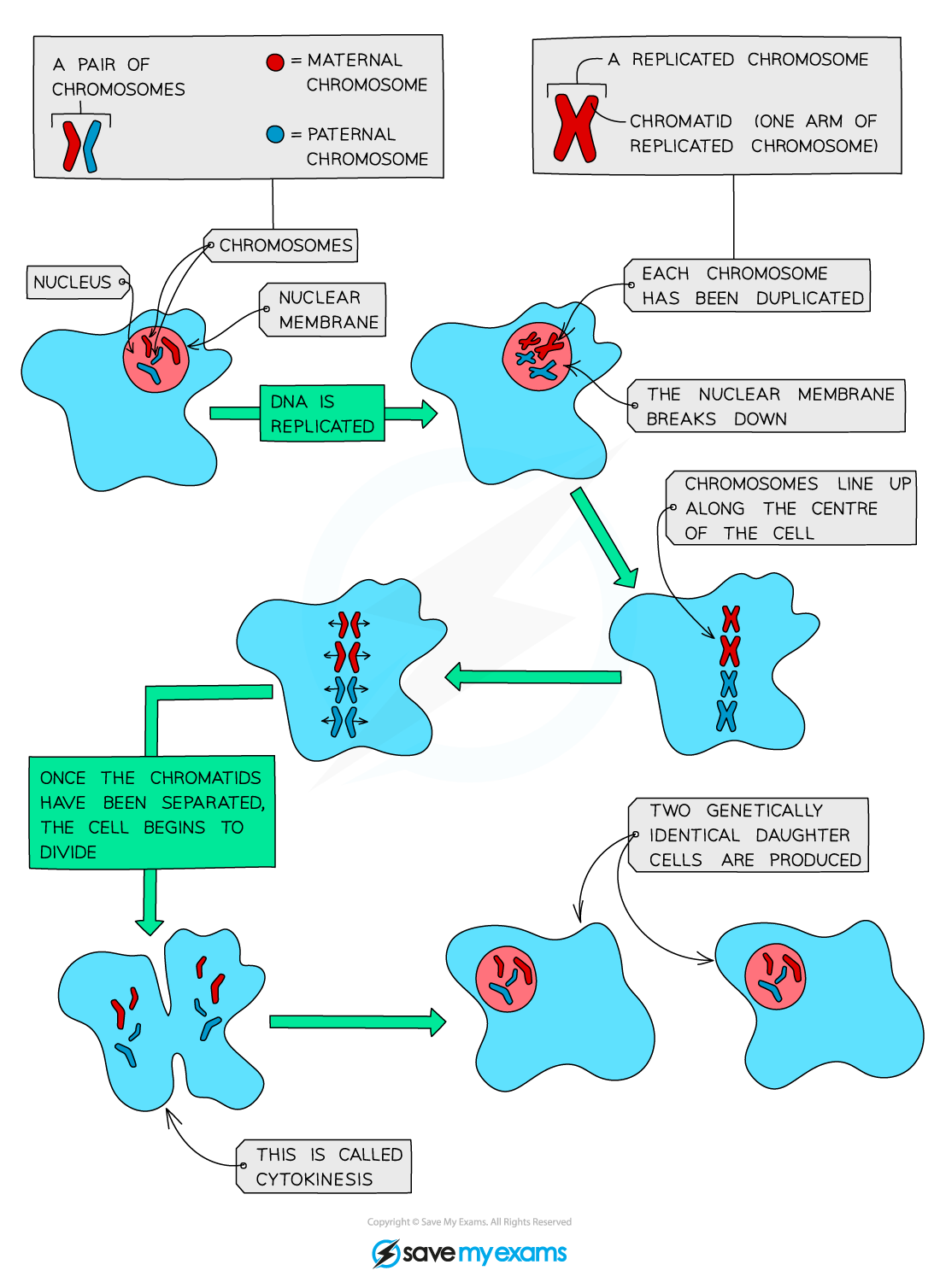- 翰林提供学术活动、国际课程、科研项目一站式留学背景提升服务!
- 400 888 0080
CIE IGCSE Biology: 复习笔记:17.1.6 Mitosis: Extended
CIE IGCSE Biology: 复习笔记:17.1.6 Mitosis: Extended
New Cells are Made by Mitosis: Extended
Mitosis - Basics
- Most body cells have two copies of each chromosome
- We describe these cells as diploid
- When cells divide their chromosomes double beforehand
- This ensures that when the cell splits in two, each new cell still has two copies of each chromosome (is still diploid)
- This type of cell division is used for growth, repair of damaged tissues, replacement of cells and asexual reproduction and is known as mitosis
- Mitosis is defined as nuclear division giving rise to genetically identical cells
 The process of cell division by mitosis
The process of cell division by mitosis
Process:
- Just before mitosis, each chromosome in the nucleus copies itself exactly (forms x - shaped chromosomes)
- Chromosomes line up along the centre of the cell where cell fibers pull them apart
- The cell divides into two; each new cell has a copy of each of the chromosomes
Importance:
- All cells in the body (excluding gametes) are produced by mitosis of the zygote
- Mitosis is important for replacing cells e.g, skin cells, red blood cells and for allowing growth (production of new cells e.g. when a zygote divides to form an embryo)
Occurs in:
- Growth: mitosis produces new cells
- Repair: to replace damaged or dead cells
- Asexual reproduction: mitosis produces offspring that are genetically identical to the parent
Mitosis & Stem Cells: Extended
- Many tissues in the human body contain a small number of unspecialised cells
- These are called stem cells and their function is to divide by mitosis and produce new daughter cells that can become specialised within the tissue and be used for different functions
- The ultimate stem cell is the zygote
- A zygote divides several times by mitosis to become a ball of unspecialised cells (around 200-300 cells)
- These are embryonic stem cells
- These cells are all the same and start differentiating as the fetus develops with recognisable features
- A zygote divides several times by mitosis to become a ball of unspecialised cells (around 200-300 cells)
转载自savemyexams

早鸟钜惠!翰林2025暑期班课上线

最新发布
© 2025. All Rights Reserved. 沪ICP备2023009024号-1








